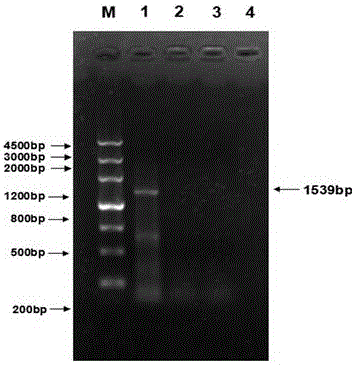Transgenic zebrafish model with G6PD (gluocose-6-phosphate dehydrogenase deficiency) 118-144 site defects
A transgenic, zebrafish technology applied in the field of genetic engineering
- Summary
- Abstract
- Description
- Claims
- Application Information
AI Technical Summary
Problems solved by technology
Method used
Image
Examples
Embodiment 1
[0028] The invention provides a method for obtaining transgenic zebrafish by microinjecting plasmids into embryos, and constructs gata1- g6pd M118-144 -egfp-PBSK-Isce I Plasmid, the newly constructed plasmid and Isce I enzyme were injected into zebrafish 1-cell stage embryos together by microinjection, reaching gata1 promoter driver mutation g6pd gene and egfp Effects of gene specificity on erythroid cell expression.
[0029] Wherein, the method for preparing the G6PD transgenic zebrafish model comprises the following steps:
[0030] (1) Prepare mutants by overlapping extension site-directed mutagenesis zg6pd M118-144 Gene:
[0031] A. Determine the 40th-48th amino acid of mutagenic zebrafish G6PD by comparing with human G6PD protein sequence. According to the zebrafish cDNA (NCBI Reference Sequence: XM_694076.5) sequence provided by NCBI, two pairs of primers were designed respectively. The upstream of the first pair of primers added BamHI restriction sites and ...
PUM
 Login to View More
Login to View More Abstract
Description
Claims
Application Information
 Login to View More
Login to View More - R&D
- Intellectual Property
- Life Sciences
- Materials
- Tech Scout
- Unparalleled Data Quality
- Higher Quality Content
- 60% Fewer Hallucinations
Browse by: Latest US Patents, China's latest patents, Technical Efficacy Thesaurus, Application Domain, Technology Topic, Popular Technical Reports.
© 2025 PatSnap. All rights reserved.Legal|Privacy policy|Modern Slavery Act Transparency Statement|Sitemap|About US| Contact US: help@patsnap.com



